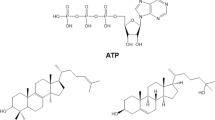Abstract
Calpain inhibitors show the potential to serve as non-surgical alternatives in treating diabetic cataract and other types of these disorders. Here, we have tested the recently developed calpain inhibitor, SJA6017, for its ability to inhibit cataractogenesis in porcine lenses. These lenses were incubated in increasing levels of extralenticular calcium (Ca2+; 5–30 mM). Atomic absorption spectroscopy was used to determine total internal lens Ca2+ and a correlation between porcine lens Ca2+ uptake and levels of lens opacification were found with a total internal lens Ca2+ level of 5.8 μM Ca2+ g−1 wet lens weight corresponding to the onset of catarctogenesis. A total internal lens Ca2+ level of 8.0 μM Ca2+ g−1 wet lens weight corresponded to cataract occupying approximately 70% of the lens cell volume. This degree of cataract was reduced by approximately 40%, when SJA6017 (final concentration 0.8 μM) was included in the extralenticular medium, suggesting that the Ca2+-mediated activation of calpains may be involved in the observed opacification. Supporting this suggestion atomic absorption spectroscopy showed that the effect of SJA6017 (final concentration 0.8 μM) on lens opacification was not due to the compound restricting porcine lens Ca2+ uptake. The results indicate that calpain-induced cataractogenesis is dependent on extracellular Ca2+ and the calpain inhibitor SJA6017 (0.8 μM) had no significant effect on Ca2+ uptake by lens. Its inhibitory effect on lens opacification may be due to a direct action on the activity of calpain. (Mol Cell Biochem 261: 169–173, 2004)
Similar content being viewed by others
References
Olson RJ, Mamalis N, Werner L, Apple DJ: Cataract treatment in the beginning of the 21st century. Am J Ophthalmol 136: 146–154, 2003
Harding JJ: Viewing molecular mechanisms of ageing through a lens. Ageing Res Rev 1: 465–479, 2002
Biswas S, Harris F, Singh J, Phoenix DA: Role of calpains in diabetes mellitus-induced cataractogenesis: A mini review. Mol Cell Biochem (this issue), 2003
Bron AJ, Brown NA, Harding JJ, Ganea E: The lens and cataract in diabetes. Int Ophthalmol Clin 38: 37–67, 1998
Truscott RJW: Human cataract: the mechanisms responsible; light and butterfly eyes. Int J Biochem Cell Biol 35: 1500–1504, 2003
Biswas S, Harris F, Phoenix DA: Treatment of cataracts: vision for the future? Biologist 48: 273–277, 2001
Azuma M, Fukiage C, David LL, Shearer TR: Activation of calpain in lens: A review and proposed mechanism. Exp Eye Res 64: 529–538, 1997
Goll DE, Thompson VF, Li HQ, Wei W, Cong JY: The calpain system. Physiol Rev 83: 731–801, 2003
Sanderson J, Marcantonio JM, Duncan G: A human lens model of cortical cataract: Ca2+-induced protein loss, vimentin cleavage and opacification. Invest Ophthalmol Vis Sci 41: 2255–2261, 2000
Horwitz J: Alpha-crystallin. Exp Eye Res 76: 145–153, 2003
Huang YH, Wang KKW: The calpain family and human disease. Trends Mol Med 7: 355–362, 2001
Wang KKW, Yuen PW: Calpain inhibition—an overview of its therapeutic potential. Trends Pharmacol Sci 15: 412–419, 1994
Donkor IO: A survey of calpain inhibitors. Curr Med Chem 7: 1171–1188, 2000
Hall A, Abrahamson M, Grubb A, Trojnar J, Kania P, Kasprzykowska R, Kasprzykowski F: Cystatin C based peptidyl diazomethanes as cysteine proteinase inhibitors: Influence of the peptidyl chain length. J Enzyme Inhib 6: 113–123, 1992
Azuma M, David LL, Shearer TR: Cysteine protease inhibitor E64 reduces the rate of formation of selenite cataract in the whole animal. Curr Eye Res 10: 657–666, 1991
Huang Z, McGowan EB, Detwiler TC: Ester and amide derivatives of E64c as inhibitors of platelet calpains. J Med Chem 35: 2048–2054, 1992
Azuma M, David LL, Shearer TR: Superior prevention of calcium ionophore cataract by E64d. BBA—Mol Basis Dis 1180: 215–220, 1992
Fukiage C, Azuma M, Nakamura Y, Tamada Y, Shearer TR: Nuclear cataract and light scattering in cultured lenses from guinea pig and rabbit. Curr Eye Res 17: 623–635, 1998
Murachi T: Intracellular regulatory system involving calpain and calpastatin. Biochem Int 18: 263–294, 1989
Tsujinaka T, Kajiwara Y, Kambayashi J, Sakon M, Higuchi N, Tanaka T, Mori T: Synthesis of a newcell penetrating calpain inhibitor (calpeptin). Biochem Biophys Res Commun 153: 1201–1208, 1988
Shenoy AM, Brahmi Z: Inhibition of the calpain-mediated proteolysis of protein kinase C enhances lytic activity in human NK cells. Cell Immunol 138: 24–34, 1991
Fukiage C, Azuma M, Nakamura Y, Tamada Y, Nakamura M, Shearer TR: SJA6017, a newly synthesized peptide aldehyde inhibitor of calpain: amelioration of cataract in cultured rat lenses. BBA—Mol Basis Dis 1361: 304–312, 1997
Nakamura M, Yamaguchi M, Sakai O, Inoue J: Exploration of cornea permeable calpain inhibitors as anticataract agents. Bioorg Med Chem 1: 1371–1379, 2003
Varma SD: Haber-Weiss reaction in peroxide damage to rat lens in vitro. Lens Res 3: 41–55, 1986
Holleschau AM, Rathbun WB, Wheeler L: Procedures for augmenting glutathione in cultured rabbit lenses. Lens Res 3: 107–118, 1986
Shi H, Zhang R, Chandrasekher G, Ma Y: Simultaneous detection of sodium, potassium, calcium and magnesium in ocular lenses by high-performance capillary electrophoresis with indirect photometric detection. J Chromatogr 680: 653–658, 1994
Tang DX, Borchman D, Yappert MC, Vrensen GFJM, Rasi V: Influence of age, diabetes, and cataract on calcium, lipid-calcium, and protein-calcium relationships in human lenses. Invest Ophthalmol Vis Sci 44: 2059–2066, 2003
Author information
Authors and Affiliations
Rights and permissions
About this article
Cite this article
Biswas, S., Harris, F., Singh, J. et al. The in vitro retardation of porcine cataractogenesis by the calpain inhibitor, SJA6017. Mol Cell Biochem 261, 169–173 (2004). https://doi.org/10.1023/B:MCBI.0000028752.89886.43
Issue Date:
DOI: https://doi.org/10.1023/B:MCBI.0000028752.89886.43




